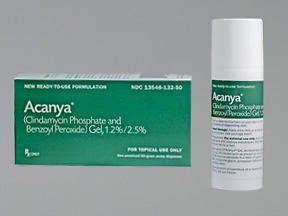This is an automatically translated article.
Agi Ery 500 medicine has the main ingredient of antibiotic Erythromycin (in the form of Erythromycin stearate) 500mg and other excipients with a sufficient amount of 1 tablet. This medicine is used to treat infections of the respiratory tract and intestinal tract. The drug is used for both children and adults.
1. What is Agi-ery 500mg?
1.1. Pharmacodynamics of Agi-ery 500mg
Drugs for the treatment of skin diseases, topical acne.
According to current research, acne is related to many factors:
Increased sebum production is dependent on Androgen; Sebaceous stasis caused by dyskeratosis, resulting in the formation of microcysts and comedones; Inflammatory reaction caused by saprophytic bacteria (Propionibacterium acnes, Staphylococcus epidermis...) and some components cause irritation of sebum, causing nodules, papules and pustules. The antibiotic Erythromycin acts on the inflammatory response. Agi-ery medicine 500mg acts on bacteria that are concentrated in hair follicles.
Although the mechanism of action has not been elucidated, many studies have demonstrated that the topical use of the antibiotic erythromycin reduces the amount of free fatty acids that cause irritation in the lipid layer of the surface. skin face.
1.2. Pharmacokinetics of the drug Agi-ery 500mg
Ability to absorb: Erythromycin antibiotic is only effective when in the base form, but when taken orally, the base form is inactivated by gastric acid. The base form is very bitter, insoluble in water, so it is often used in the form of salts and esters (such as erythromycin stearate, erythromycin ethylsuccinate ...) or prepared in the form of intestinal soluble. The drug Agi-ery 500mg is absorbed orally and rectally; Distribution: Agi-ery 500mg is 70-90% bound to plasma proteins, widely distributed in body tissues and fluids, including middle ear fluid, semen, prostate gland, placenta and through mother milk; Metabolism: Agi-ery 500mg is metabolised by the liver; Elimination: Mainly excreted in the feces. 1.3. Erythromycin 500mg Erythromycin is an antibiotic belonging to the Macrolide group, with a broad spectrum of action, mainly bacteriostatic against Gram-positive, Gram-negative bacteria and other bacteria including Mycoplasma, Spirochetes, Chlamydia, and Rickettsia. Erythromycin binds inversely to the 50S subunit of susceptible bacterial ribosomes and inhibits protein synthesis. Erythromycin has almost no effect on gram-negative aerobic bacteria.
2. Indications for the use of Agi-ery 500mg
Erythromycin is used to treat many bacterial infections such as bronchitis, Campylobacter enterocolitis, chancroid, diphtheria, pneumonia and Legionella infections, neonatal conjunctivitis, and bacterial conjunctivitis. Chlamydia pertussis , pneumonia (caused by Mycoplasma, Chlamydia, atypical pneumonias and also caused by Streptococcus), sinusitis; in combination with Neomycin to prevent infection during bowel surgery; Erythromycin has the advantage over Tetracycline antibiotics that it can be used for pregnant women and young children, so it is very useful to treat atypical pneumonia caused by Chlamydia or Haemophilus influenzae; Erythromycin can be used for people who are allergic to beta-lactam antibiotics and should be reserved for people with penicillin allergy, otherwise resistance will increase to an uncontrolled level; Used as an alternative to penicillin in the long-term prevention of acute rheumatic fever.3. Usage and dosage of Agi-ery 500mg
You should take Agi-ery 500mg on an empty stomach. If you have digestive irritation take the medicine with food.
The usual oral dose is:
Adults: From 1 to 2 g/day divided into 2 - 4 times. In severe infections, it can be increased to 4g/day, divided into several times; Children: About 30 to 50 mg/kg body weight/day. In case of severe infections, the therapeutic dose can be doubled; Children from 2 to 8 years old use 1g/day divided into several doses; Children under 2 years old use 500 mg / day, divided into several doses. In case of therapeutic overdose: You need to bring the person who overdosed on the drug to the nearest medical facility for timely and correct treatment. The treating doctor will prescribe the use of Epinephrine, Corticosteroids and antihistamines to manage allergic reactions; gastric lavage to remove unabsorbed drug from the body and when necessary, supportive measures can be used.
4. Undesirable effects of the drug Agi-ery 500mg Common adverse effects in clinical, ADR >1/100:
Gastrointestinal: Gastrointestinal disturbances such as abdominal pain, vomiting, diarrhea; Skin: Appearance of a rash on the skin; Other: Phlebitis and soreness at the injection site. Undesirable effects are rare in clinical, 1/1000 < ADR < 1/100:
Skin: Urticaria, skin rash. Rare clinical adverse effects, ADR < 1/1000:
Systemic: Anaphylactic reaction; Circulatory: Arrhythmia; Liver function: Abnormalities in laboratory tests such as increased transaminase, increased serum bilirubin, intrahepatic cholestasis; Ears: Deaf and resilient. Inform your doctor about any side effects you experience while taking this medicine.
5. Drug interactions of Agi-ery 500mg Caution should be exercised when Agi-ery 500mg is used in combination with the following drugs:
Erythromycin reduces plasma clearance and prolongs the duration of action of Alfentanil; Contraindicated when using the combination of Astemizol or Terfenadine with Agi-ery 500mg. This is due to the risk of cardiotoxicity such as torsades de pointes, ventricular tachycardia and death; The antibiotic Erythromycin can inhibit the metabolism of carbamazepine and valproic acid, increasing plasma concentrations of these drugs and increasing toxicity; Erythromycin can promote or prevent chloramphenicol or lincomycin from binding to the 50s subunit of the bacterial ribosome, thereby antagonizing the effects of these drugs; Bacteriostatic drugs may affect the bactericidal effect of penicillin in the treatment of meningitis or in cases where rapid bactericidal action is required. It is best to avoid combining these drugs together; Agi-ery 500mg increases the concentration of Digoxin in the blood because it affects the intestinal microflora, making Digoxin not inactive; The antibiotic Erythromycin reduces the clearance of Xanthins such as Aminophyllin, Theophyllin, Caffeine, thereby increasing the concentration of these substances in the blood; The antibiotic Erythromycin may prolong prothrombin time excessively and increase the risk of bleeding during prolonged treatment with Warfarin, by reducing the metabolism and clearance of Agi-ery 500 mg. The doctor will adjust the dose of Warfarin and closely monitor the Prothrombin time; Erythromycin reduces the clearance of the drugs Midazolam or Triazolam and enhances their effects; Administration of high doses of Erythromycin with ototoxic drugs in patients with renal impairment may increase the ototoxic potential of these drugs; Co-administration of the antibiotic Erythromycin with hepatotoxic drugs may increase the potential for hepatotoxicity; Erythromycin increases ciclosporin plasma concentrations and increases the risk of nephrotoxicity; Erythromycin has the ability to inhibit the metabolism of ergotamine and increase the vasoconstrictor effect of this drug; Erythromycin and Lovastatin should be used with caution and may increase the risk of rhabdomyolysis. 6. Some notes when using Agi-ery 500mg 6.1. Contraindications of the drug Agi-ery 500mg Patients with hypersensitivity to Erythromycin antibiotics, previously used Erythromycin but have liver disorders, patients with a history of deafness. Its use is considered unsafe for people with acute porphyria, because it causes acute exacerbations. Terfenadine should not be combined with terfenadine, especially in patients with heart disease, arrhythmias, bradycardia, prolonged Q-T interval, ischemic heart disease or patients with electrolyte disturbances. 6.2. Precautions for use with other groups Pregnancy: The antibiotic Erythromycin crosses the placenta, but there are no reports of unwanted effects of erythromycin stearate. Lactation: The antibiotic Erythromycin is secreted into breast milk, but no adverse effects have been reported in infants who are breastfed with erythromycin. For those who drive or operate machinery: Before taking Agi-ery 500mg, always consult your doctor or pharmacist to weigh the benefits and risks of using the drug for drivers and operators. due to undesirable effects of the drug.
Please dial HOTLINE for more information or register for an appointment HERE. Download MyVinmec app to make appointments faster and to manage your bookings easily.













